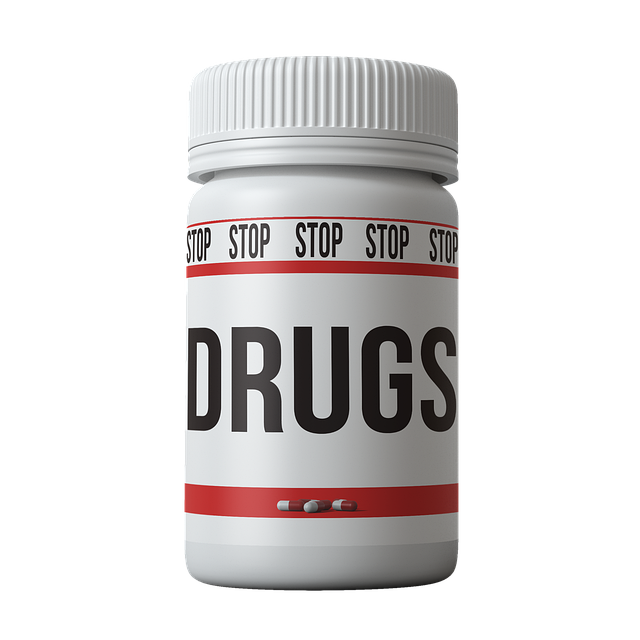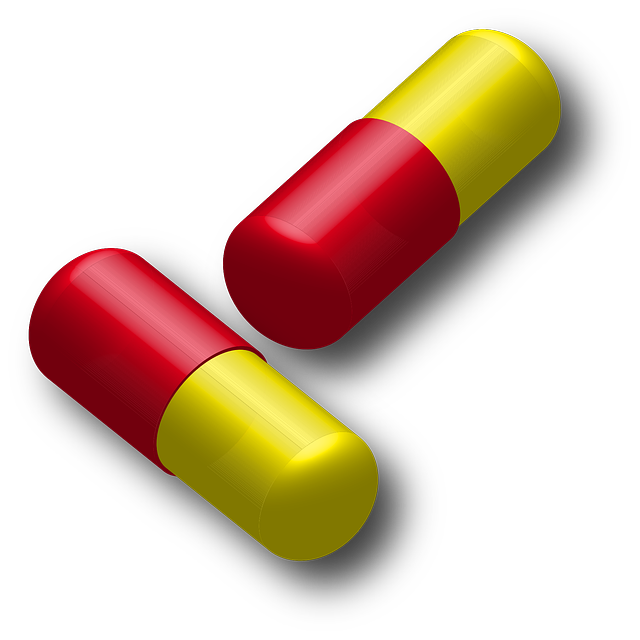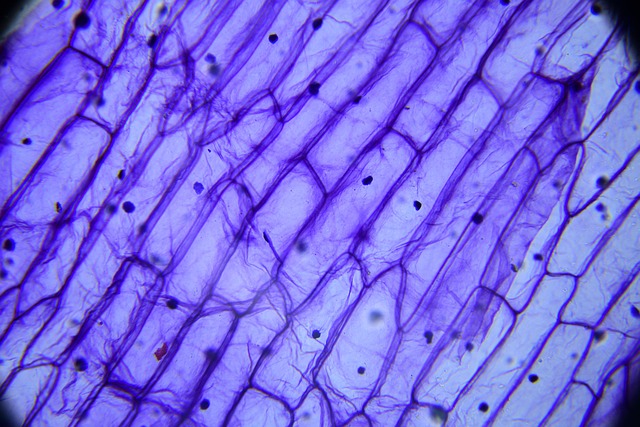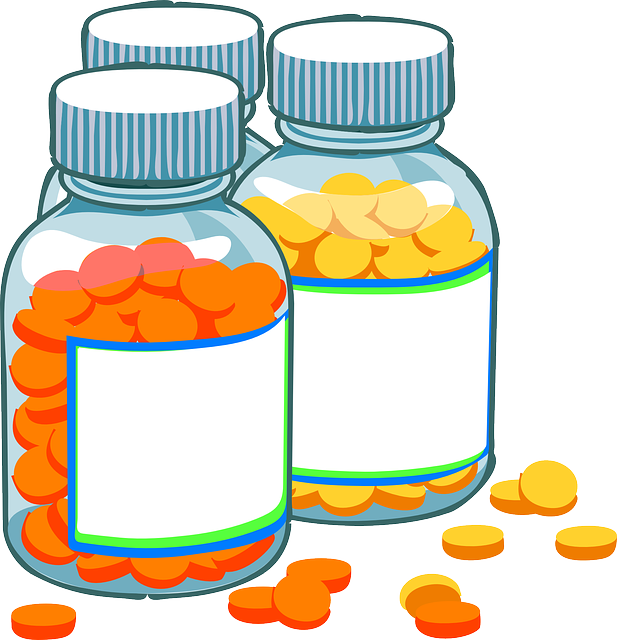GLP-1 receptor agonists (GLP-1 drugs) are medications that mimic natural hormone GLP-1, revolutionizing type 2 diabetes management. They stimulate insulin secretion and inhibit glucagon production to regulate blood sugar levels. Beyond glycemic control, these drugs offer appetite reduction, weight loss, improved cardiovascular outcomes, and potential benefits in treating other metabolic disorders. While they have side effects like nausea, monitoring is crucial for safe use, especially with combination therapies. Future research aims to enhance their effectiveness and reduce side effects through novel delivery methods and combinatorial treatments, potentially expanding GLP-1 drugs' role beyond diabetes management.
GLP-1 receptor agonists, a class of diabetes medications, have transformed glycemic control. This article delves into the intricate mechanism of action of these innovative drugs. We’ll explore how they mimic natural GLP-1 effects, focusing on their impact on insulin secretion and glucagon inhibition. Beyond blood sugar regulation, we’ll uncover their diverse physiological actions. Additionally, we’ll discuss clinical applications, benefits, side effects, and future research directions for GLP-1 drugs, providing a comprehensive overview of these game-changing treatments.
GLP-1 Receptor Agonists: An Overview

GLP-1 receptor agonists are a class of drugs that mimic the effects of the natural hormone glucagon-like peptide-1 (GLP-1). These molecules bind to and activate GLP-1 receptors in the body, leading to various physiological responses. By doing so, they play a significant role in regulating blood sugar levels, promoting insulin secretion, and reducing glucagon release. This dual action helps lower blood glucose concentrations, making GLP-1 drugs valuable in the management of type 2 diabetes.
Beyond their impact on glycemic control, GLP-1 receptor agonists also exhibit other beneficial effects. They can stimulate appetite reduction and decrease food intake, contributing to weight loss. Additionally, these drugs have been linked to improved cardiovascular outcomes, including reduced risks of heart failure and certain types of cardiovascular events. The versatility of GLP-1 drugs in treating metabolic disorders and their promising outcomes in non-diabetic populations make them an exciting area of research in medicine.
Understanding GLP-1 and its Role in Glycemic Control

GLP-1, or glucagon-like peptide-1, is a hormone produced by specialized cells in the intestine in response to food intake. It plays a crucial role in glycemic control, helping to regulate blood sugar levels. When food enters the digestive system, GLP-1 stimulates insulin secretion from the pancreas in a glucose-dependent manner, meaning it promotes insulin release only when blood glucose is high. This action ensures a balanced response to meal consumption. Furthermore, GLP-1 drugs, also known as GLP-1 receptor agonists, mimic this natural process by binding to and activating GLP-1 receptors on pancreatic beta cells, thereby enhancing insulin secretion and improving glycemic control in individuals with type 2 diabetes.
Mechanism of Action: How These Drugs Mimic GLP-1 Effects

GLP-1 receptor agonists mimic the effects of glucagon-like peptide-1 (GLP-1), a hormone naturally produced in the gut after eating. These drugs bind to GLP-1 receptors on specific cells in the pancreas and brain, initiating a cascade of actions that significantly impact glucose regulation.
By activating these receptors, GLP-1 drugs stimulate insulin secretion from the pancreas in a glucose-dependent manner, meaning they promote insulin release only when blood sugar levels are high. This effect helps lower blood glucose. Additionally, they suppress glucagon release, reducing the body’s production of this hormone that raises blood sugar. These dual actions work together to improve glycemic control without causing low blood sugar (hypoglycemia), making them a valuable tool in managing type 2 diabetes.
The Impact on Insulin Secretion and Glucagon Inhibition

GLP-1 receptor agonists have a dual effect on insulin secretion and glucagon inhibition, which significantly contributes to their blood glucose-lowering abilities. When activated, these drugs stimulate insulin release from beta cells in the pancreas, especially in response to meals. This effect is dependent on the presence of glucose, making it more pronounced when blood sugar levels are high. Moreover, GLP-1 drugs inhibit glucagon secretion, a hormone that stimulates the liver to produce and release glucose into the bloodstream. By blocking glucagon action, these agonists help prevent excessive glucose release, further supporting glycemic control.
The combined actions of enhancing insulin secretion and reducing glucagon output make GLP-1 drugs potent tools in managing type 2 diabetes. This dual mechanism offers a more comprehensive approach to treating hyperglycemia compared to traditional medications that often focus on a single target.
Beyond Blood Sugar Regulation: Other Physiological Actions

GLP-1 receptor agonists, a class of drugs designed to mimic the effects of the natural hormone GLP-1, are primarily known for their role in blood sugar regulation, particularly in managing type 2 diabetes. However, their physiological actions extend far beyond glycemic control. These drugs have been shown to exert various other effects on the body, contributing to their potential in treating multiple health conditions.
One notable action is their impact on appetite and weight management. GLP-1 drugs can induce feelings of satiety, leading to decreased food intake and supporting weight loss efforts. Moreover, they promote insulin secretion in a glucose-dependent manner, which aids in improving insulin sensitivity and maintaining stable blood sugar levels throughout the day. Other beneficial effects include reduced cardiovascular risks, improved kidney function, and potential neuroprotective actions, all of which make GLP-1 drugs promising candidates for diverse therapeutic applications beyond diabetes management.
Clinical Applications and Benefits of GLP-1 Drugs

GLP-1 receptor agonists, or GLP-1 drugs, have revolutionized diabetes management and offer a multitude of clinical applications. These drugs mimic the effects of the natural hormone glucagon-like peptide-1 (GLP-1), which is secreted in response to food intake. By activating GLP-1 receptors, these agonists stimulate insulin secretion from beta cells, helping to lower blood glucose levels. This mechanism makes them particularly effective in treating type 2 diabetes, where insulin resistance and impaired insulin secretion contribute to hyperglycemia.
Beyond glycemic control, GLP-1 drugs have additional benefits. They promote weight loss by increasing feelings of satiety and reducing appetite, making them valuable tools in the fight against obesity. Additionally, these medications have been shown to reduce cardiovascular risk factors, such as blood pressure and lipid levels, further emphasizing their clinical value. The versatility of GLP-1 drugs in managing diabetes and associated complications makes them a significant advancement in healthcare.
Common Side Effects and Considerations for Use

GLP-1 receptor agonists, while generally well-tolerated, can cause several side effects, many of which are related to their effect on gut function. Common gastrointestinal symptoms include nausea, vomiting, and diarrhea. These symptoms often occur during the initial weeks of treatment but tend to lessen over time as the body adjusts. In some cases, patients may also experience stomach pain or an increase in appetite, which can be managed with dietary adjustments and medication.
Another important consideration for the use of GLP-1 drugs is their potential impact on blood sugar levels. Although they are primarily used to improve glycemic control in people with type 2 diabetes, these medications can cause hypoglycemia, especially when combined with other antidiabetic agents. Regular monitoring of blood glucose levels is recommended, particularly during the initiation and adjustment phases of treatment. Additionally, GLP-1 agonists may lead to weight loss, which can be beneficial for overall health but should be closely monitored to avoid excessive weight loss or related complications.
Future Perspectives and Research Directions

The future of GLP-1 drug development looks promising, with ongoing research focusing on enhancing their efficacy and reducing side effects. One area of interest is the exploration of novel delivery methods, such as transdermal patches or oral formulations with improved absorption, to provide more convenient and consistent dosing regimens. Additionally, scientists are investigating the potential of combinatorial therapies, where GLP-1 receptor agonists are paired with other diabetes medications to optimize glycemic control and reduce overall treatment complexity.
As our understanding of GLP-1 biology deepens, targeted modifications to these drugs could lead to more personalized treatments. This may include tailoring GLP-1 drugs to specific patient needs, such as adjusting their duration of action or potency based on individual responses. Furthermore, preclinical studies are uncovering novel applications beyond diabetes management, suggesting a broader role for GLP-1 drugs in the future treatment of metabolic disorders and cardiovascular health.
